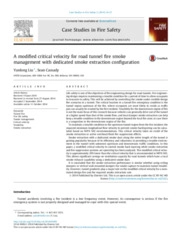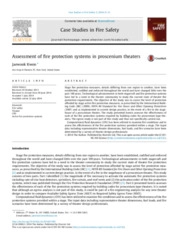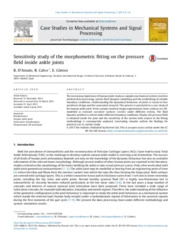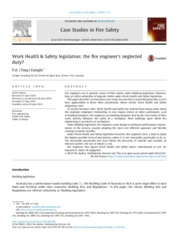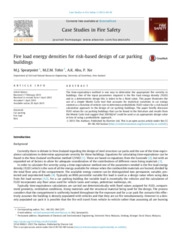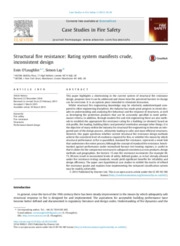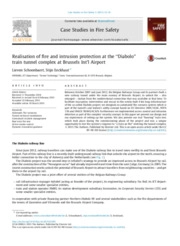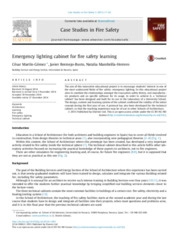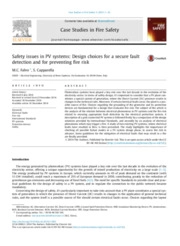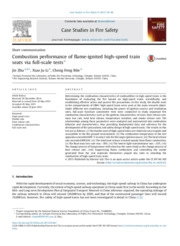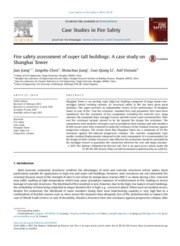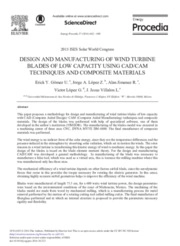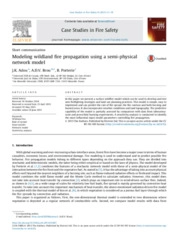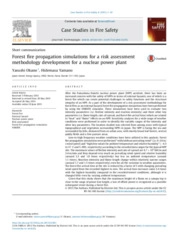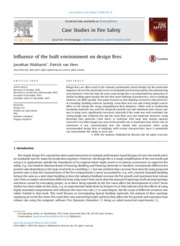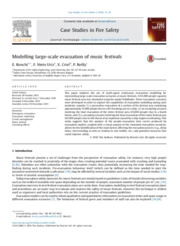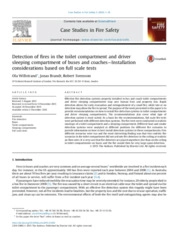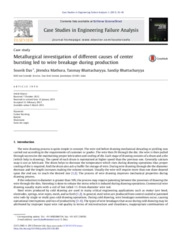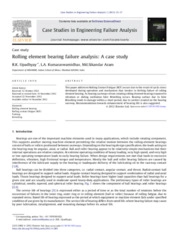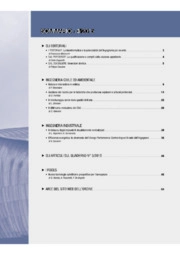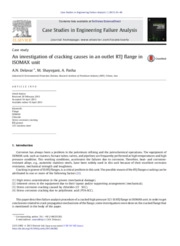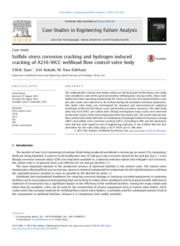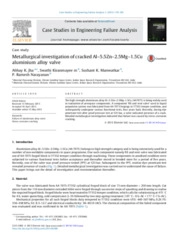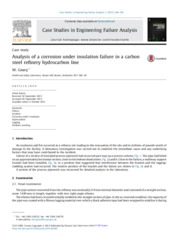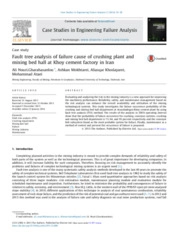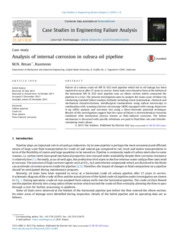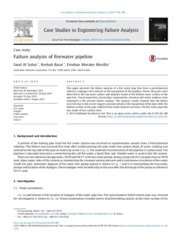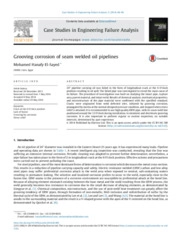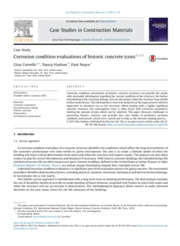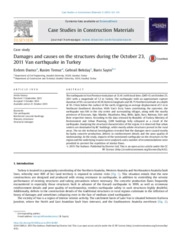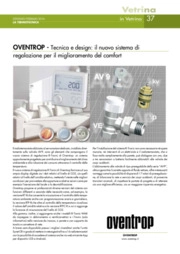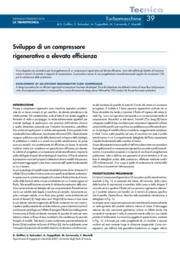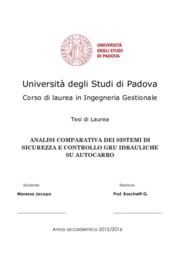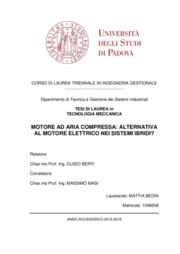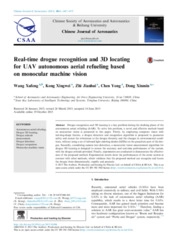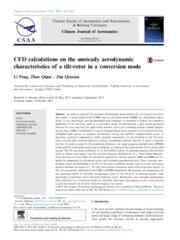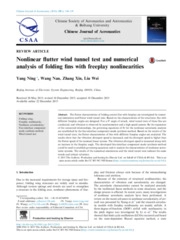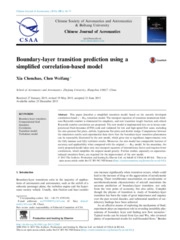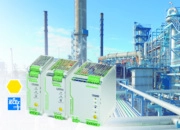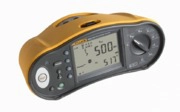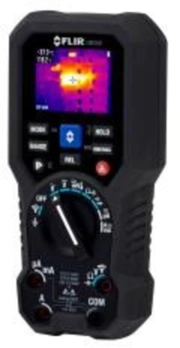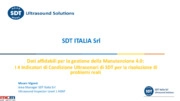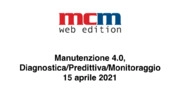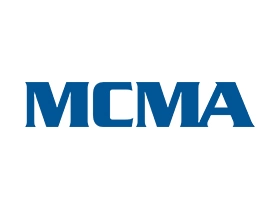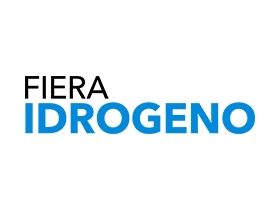(in lingua inglese)
Based on a typical example 2 lane road tunnel with a fixed smoke extraction rate of 282 m3 /s, Computational Fluid Dynamics (CFD) analysis has been performed on selected cases to investigate the modified critical velocity considering specific smoke extraction configurations and other parameters. These parameters examined included the extraction damper locations, total number of operating dampers, tunnel gradient, fire location and the traffic blockages in the tunnel region that is upstream of the fire.
(in lingua inglese)
It was observed that opening of the stage roof vents by means of rate-of-rise heat detectors precede the activation of sprinkler, while sprinkler activation precedes roof vent activation by fusible link due to its mass of thermal element. While the activation of sprinklers seem less critical compared to the effective operation of the roof vents and fire safety curtain for the maintenance of a tenable environment within the auditorium, sprinklers are key to limiting the ultimate magnitude of the fire, protecting the integrity of the structure, and limiting property damage and losses.
(in lingua inglese)
In this paper the 2D metrological characterization in the sagittal plane of the articular surfaces in the lubricated contact of the human ankle joint has been carried out. From a proper medical image segmentation, tibial and talar bone surfaces are modelled on constant curvature (circles) under different criteria: least squares (LS) and minimum zone (MZ).
(in lingua inglese)
As the safety culture evolves, Work Health and Safety (WHS) legislation has become more than an employer–employee relationship. It now imposes duties on other participants such as building designers who have an upstream influence on WHS. Fire engineers are a category of designers who have a direct influence on safety precautions. Most buildings upon which fire engineering is practiced are workplaces. Fire engineers therefore have dual duties in such cases. Under Building legislation, fire engineers must design to minimum building code performance requirements.
(in lingua inglese)
The paper demonstrates how a probabilistic approach to obtaining FLED values can be applied by bringing together a number of recent studies related to car parking buildings. The application of the Monte Carlo model allows for a future reassessment of FLED values for car parking buildings should there be new energy content measurements for cars or changes in the composition of a vehicle fleet. The approach could also be modified to account for the occupancy of car parking spaces as a function of the time of day.
(in lingua inglese)
This study presents and compares example buildings that highlight the above shortcomings in the current grade structure and show how a applying a ‘‘consistency of crudeness’’ in the design method, through the use of refined fire resistance ratings, leads to more robust and dependable outputs. Refined grades would also reduce the significance of movement between notional thresholds or ‘‘magic numbers’’ and, therefore, the focus of design and approvals discussions regarding performance-based methods could move away from comparing the outputs of the engineering analysis with the prescriptive guidelines, and towards the validity of the methodology, assumptions, input parameters and other facets of the design.
(in lingua inglese)
In this paper we showed how a set of well-considered automatic responses can contribute positively to the implementation of the safety and security policy of a railway tunnel, based on international recommendations. The automated scenarios (and the systems behind it) assist control room operators and intervention teams in the quick assessment of possibly dangerous situations, and assist them in the selection and swift activation of the appropriate escape and rescue facilitation measures. Mainly being infrastructural measures, these ‘technical’ pre-configured fire scenarios are a useful complement to the operational measures which continue to be of utmost importance to safeguard the tunnel infrastructure and its users.
(in lingua inglese)
To ensure students understanding of the content, as well as the maintenance of the cabinets, operational protocols in both Spanish and English have been written. Both languages were included because it was expected to achieve the widest possible distribution of this tool, which is intended for use by non-experts and is open to continuous improvement from other working groups with similar concerns. Thus, the tests always follow the same specific logical order, both for student practice and for anyone else who uses them. To ensure the learn through hands-on experience the groups are of less than eight, they meet in groups of less than eight, everyone can practice following the guidelines of the protocols.
(in lingua inglese)
A PV plant is a special generation system in which the presence of DC results in changes to the application of general technical rules. Moreover, if certain electrical faults occur, the system itself can become a possible source of fire. The layout of the system, the grounding of the negative pole of the DC side and the means of protection are all vital concerns affecting the design of a system that accounts for the risk of fire. In this paper, the design solutions provided by different International Standards have been studied and their safety performances compared. The effect of electrical faults in PV systems is significantly governed by these standards and an analysis of the relation between the faults and the related means of protection has been presented.
(in lingua inglese)
In this study, the double seats in the compartments of CRH1 high-speed trains were used as the main research object. A
limited number full-scale furniture calorimeter tests were conducted to study the combustion behavior characteristics of
these seats. Through discussion and analysis of these tests, the following indications of double seat performance in train
carriages can be drawn: the combustion characteristics of high-speed train double seats depend on the ignition power, ventilation rate, and other factors of fire ground environment; the ignition time appears to be mainly determined by the double seat surface material and ignition power. The combustion duration of double seats is in the range 18–26 min based on these specific test conditions.
(in lingua inglese)
The fire resistance of the Shanghai Tower against progressive collapse was studied in this paper, as an independent review of the design. The fire resistance of the key components of Shanghai Tower is listed in Table 4. They indicate that their real fire resistances are far beyond their design values (3 h). The concrete components show better fire resistance and smaller residual displacements than the steel components.
(in lingua inglese)
In short, the application consists on a strategic tool with online and offline availability, that through the utilization of cartographic bibliographic resources applies an important improvement in the operation of the emergency services, apart from the consequent optimization in operative and managing response. All the building information sheets are freely accessible and there is in developing process and update to transfer the application to mobile devices. For the moment the database requires more memory space than the benefits that applies, but the managing ranks of the emergency services are already equipped with remote controls to conduct management operations.
(in lingua inglese)
A fast and simple surface fire model is presented, which combines the features of a network model with those of a semiphysical model of the interaction between the fire and vegetative cells which strongly depends on weather conditions, land topography, and vegetation. Radiation and convection from the flaming zone and embers, and radiative heat loss to the ambient are considered in the preheating process of unburned cells. The predictive capability of the model is partially assessed by comparison with data from laboratory-scale and prescribed burning experiments. Discrepancies between model results and measurements are observed. A better agreement should be obtained by increasing the accuracy with which model parameters are determined.
(in lingua inglese)
As a part of the forest fire risk assessment methodology, key parameters of a forest fire hazard as a risk for NPP safety were identified in this study to be fireline intensity, reaction intensity, flame length, ROS, and forest fire arrival time. Fuel model parameters of deciduous vegetation were based on deciduous broad leaf trees, Japanese cedar and Japanese pine tree, and vegetation, topographical, and weather databases for a typical NPP sites in Japan were consolidated for the FARSITE simulation. This study showed that the intensity and the key parameters depend significantly on PWS and RH, but less on AT. The reaction intensity and fireline intensity were of the order of 7.0 102 –1.2 103 kW/m2 and 5.0 102 –1.0 103 kW/m, respectively.
(in lingua inglese)
It has been shown that the building material used in a fire compartment might influence the growth rate of a design fire in a significant way; insulating wall/ceiling materials will probably increase the growth rate which in turn will mean that the time to critical conditions will be shorter compared to the expected result. However, if the building material used is thermally thin or has a large heat storing capacity the influence is rather negligible. The maximum heat release rate and transient behavior of the fire was shown to be very dependent on ventilation factor in combination with the building material; with only one door opening present the initial fire growth was rapid due to radiative feedback but was then hampered by the oxygen depletion which caused the heat release rate to decrease significantly during the course of the simulation duration.
(in lingua inglese)
This work explored the use of a multi-agent continuous evacuation modelling approach to simulate a case study of largescale evacuation scenarios at music festivals. Evacuation models had sufficient flexibility to represent the behavioural aspects affecting the evacuation process during escalating and cascading scenarios. In particular, the study of the peopleevacuation time curves produced by evacuation models, coupled with the visual analysis of the evacuation process, allowed for the identification of the predominant factors affecting evacuation (e.g., delay times, flows through exits, etc.) and potential measures that could improve safety levels.
(in lingua inglese)
If smoke detectors are used in many spaces the use of aspirating systems could be considered instead of point smoke detectors. The benefit of this approach is that only one detector is needed and the system samples air from e.g., both the ceiling and other spaces in the toilet compartment. More advanced aspirating systems could potentially also sample air from different locations around the entire bus. An aspirating smoke detector in the toilet compartment ceiling also has a great advantage in that the detector is hidden and protected. According to the bus operators they have problems with passengers pulling down the detectors. Another important design consideration when installing detectors in the toilet compartment ceiling is the need to avoid the air flow from the air inlet.
(in lingua inglese)
The wire drawing process is quite simple in concept. The wire rod before drawing mechanical descaling or pickling was carried out according to the requirements of customer or grades .The wire then fit through the die; the wire is then pulled through successive die maintaining proper lubrication and cooling of die. Each stage of drawing consists of a drum and a die (which help in drawing). The speed of each drum is maintained at higher speed than the previous one. Generally calcium soap is use as lubricant. The drum helps to decrease the temperature which rises during drawing operations thus proper cooling of die is required. And the drum also acts a buffer for storage of wire.
(in lingua inglese)
In order to prevent fretting (false brinelling) in bearings of standby equipment, it is necessary to provide continuous slow rotation of shafts during operation while nearby machines is running [4]. Incrementin the angle of oscillation to secure roller overlap in order to drag fresh lubricantinto the area, ifthe surfaces can be separated by lubricant, fretting ofthe metal cannot occur. When the load is supported by lubricating film it can separate two surfaces from contacting each other with minimum friction. Recommendation towards use of larger bearing of higher capacity to reduce contact loads. It is also recommended that increase the hardness of the elements as much as possible.
Obiettivo di tale articolo è quello di illustrare i principali strumenti di misura e verifica dell’Efficienza Energetica, che costituiscono la base per la predisposizione degli allegati tecnici agli EPC, al fine di fornire una valutazione oggettiva delle performance (baseline, algoritmo di calcolo, sistemi di monitoraggio strumentale, fattori di normalizzazione e correzione dei consumi energetici) ed una allocazione e normalizzazione dei rischi per l’intera vita utile del Progetto.
(in lingua inglese)
In this case, another source of chloride is anti-seize grease that it is used for fastening of flanges. So a sample of that grease was evaluated according to ASTM D808 method to determine the amount of its chloride. The result showed that there was 0.1 wt.% chloride in the used grease. The entrapped chloride at the groove of RTJ flange because of its geometry get concentrated by evaporation at high operating temperature, and the subsequent cracking of the RTJ groove occurs at areas with applied or residual stress. Above evidences indicated that the flange failed by Cl SCC due to using unqualified anti-seize grease in maintenance procedure.
(in lingua inglese)
The control valve body failed due to combination of SSC and HIC cracking in wet H2S environment. Also A217-WC9 steel was found to have more resistance to SSC cracking than A216-WCC steel. The improved SSCC resistance of the A217-WC9 steel can be attributed to its higher pitting resistance.
(in lingua inglese)
Valve A had failed as a result of particles of material becoming trapped between the valve seat recess and the valve seat ball, leading to erosion of the valve seat recess, valve seat ball and the valve operating pin; this allowed hydraulic fluid to flow when the valve was nominally in the de-energised position. Analysis of particles within the valves showed that numbers of particles were up or greater than 100mm in size and this pointed to a failure to maintain the cleanliness of the hydraulic fluid system. The material of construction of the valve seats was not compliant with engineering drawings although the hardness values were close to those specified.
(in lingua inglese)
The component was anodised more than five years ago and after qualification keptin store. The presence of numerous pits on the valve face, especially nearby cracked region was indicative of anodised layer inability to prevent corrosion. The anodised layer was not intact throughout. There were many locations all along the crack, indicating devoid of anodised layer. It seems as if the anodised layer was mechanically damaged/or deteriorated due to long storage period, which facilitated corrosion to take place. In fact, under such condition the anode to cathode area ratio will be drastically low, resulting in very high anodic current density and in order to balance during the electro chemical reactions, the corrosion will be severe.
(in lingua inglese)
The material of construction of the pipe was consistent with codes and standards and fit for purpose. The pipe coating system appeared to be compliant with specifications; there was no evidence to suggest that an inadequacy of the coating contributed to failure. The lagging system appeared to be fit for purpose, there was no evidence that inadequacy of the intended system contributed to failure. Failure of the pipe had occurred as a result of corrosion under insulation (CUI), the rate of corrosion was entirely consistent with published data. The wall thickness of the pipe had been reduced to a level that would not support the internal pressure; the remaining ligament had then failed as a result of a ductile overload.
(in lingua inglese)
Comparative study of the scientific literature of the time 1995–2013 about FTA applications in the mining field showed that the most frequent papers are in 2010 and 2012. The most attention was paid to safety problems and spontaneous combustion issues. In this paper, a case study of Azarabadegan Khoy cement factory was conducted. In this regard, the factory was decided to system and subsystem level based on department level and those basic levels were identified. Then the required data were collected and the relevant statistical analysis was performed.
(in lingua inglese)
Based on visual analysis, it can be seen that the leaks are in the form of teardrop shaped pits or grooves at the bottom of the pipeline (6 o’clock position) where water layers preferentially form. The absence of scales or deposits around the grooves suggest that the pipeline is locally attacked by flow-induced corrosion. Such corrosion initially produces brittle scales or rusts on the pipe surface exposed to the fluid. These scales act as barrier between the metal surface and the fluid so that further corrosion penetration is inhibited. Subsequently, the fluid flow causes the erosion process and the scales or corrosion products are periodically scoured from the exposed surface hence increasing corrosion rate along the flow direction.
(in lingua inglese)
The severe pitting attack at the top inner portion of the pipe was due to highly oxygenated water. While, the bottom surface of the pipe suffered from under deposit corrosion problem. The deposition on the bottom surface of the pipe is an evidence of stagnancy or a very low flow rate of water in this area of the system. No material upgrade is required as the carbon steel is suitable material for this application however, stagnant conditions or very low flow rates must be avoided.
(in lingua inglese)
Failure of the pipeline segment is directly related to a poor quality ERW process, since incomplete penetration, un-melted zones, and lack of fusion close to the pipe inner surface were present on extended regions along the seam weld line. Grooving corrosion is largely accelerated by the above-mentioned welding defects, leading to rapid thinning in these defective regions of the seam weld. At a critical wall thickness, the radial stress of the flowing fluid exceeds the pipe hoop strength leading to crack initiation and propagation until stress relief is attained.
(in lingua inglese)
Corrosion condition assessments on historic concrete icons can have challenging parameters set forth prior to establishing testing protocols. Even though concrete is inexpensive and reproducible, the reasons for retaining as much material as possible during the investigation and subsequent repair must be balanced with safety and an understanding of the material conditions. An establishment of corrosion behavior can assist in understanding condition, deterioration, and future degradation. It is imperative to know condition prior to making repair decisions which may have lasting consequences. Three of the four structures discussed in this paper have owners which are cognizant of the historic value of their buildings.
(in lingua inglese)
Provision of engineering services at every stage, employing quality assured ready-mixed concrete, holding all employees who participated in the project development and construction processes liable to certification, and finally a well functioning building supervision system will prevent to a large extent the emergence of problems in question. Assessment of the current states of the existing buildings must be conducted on a per-building basis, in addition to determining their structural safety against earthquake, after which the flawed structures must be strengthened.
Per l’installazione del sistema R-Tronic non sono necessarie né opere murarie, né interventi di un elettricista e il radiotermostato, che si fissa molto semplicemente alla parete, può dialogare con uno, due o tre servomotori a batteria facilmente abbinabili alle valvole dei corpi scaldanti. L’abbinamento alle valvole di tipo preregolabile della serie “AV9”, oltre a garantire il corretto apporto di fluido vettore, offre interessanti vantaggi come la possibilità di disporre di 17 valori di preregolazione, di bilanciare la rete a servizio dei corpi scaldanti, di prevenire transitori anomali, di rispettare le portate di progetto e di ottenere sia una migliore efficienza, sia un maggiore risparmio energetico.
Nel presente lavoro è stata presentata una metodologia per il progetto di micro turboespansori assiali da utilizzare in sostituzione di valvole di laminazione per recuperare parte dell’energia che altrimenti verrebbe persa. Questa metodologia consiste essenzialmente in tre passi: utilizzo di una semplice formulazione unidimensionale per la definizione dei principali parametri geometrici e operativi della macchina; calcolo bidimensionale ottimizzato per la definizione della forma delle palette statoriche e rotoriche; simulazione CFD tridimensionale dell’intera macchina per valutare i coefficienti di perdita necessari nel calcolo unidimensionale.
Si è proposta una procedura di progettazione per un compressore rigenerativo ad elevata efficienza. Una geometria di primo tentativo è stata individuata utilizzando un codice in-house monodimensionale, incomprimibile, che mette in relazione le caratteristiche geometriche della macchina con le condizioni di funzionamento progettuali obiettivo. Il codice non tiene conto del dettaglio della macchina ma considera solamente voluta e girante. È stata quindi effettuata un’analisi dettagliata dell’intera macchina utilizzando simulazioni tridimensionali avendo come scopo la definizione delle prestazioni globali e la valutazione dei componenti critici. Tale analisi ha mostrato le potenzialità del codice monodimensionale permettendo di individuare nelle bocche di ammissione e mandata la responsabilità del decadimento delle prestazioni rispetto a quelle di progetto.
La tecnologia legata al software di gestione, HPLS sul modello EH D e SHPLS sul modello SH D, garantisce la durata dei componenti sollecitati maggiormente utilizzando una ovvia riduzione nella velocità che va a compensare il maggiore stress di carico con un utilizzo addolcito nelle accelerazioni e decelerazioni grazie anche al radiocomando che permette non solo confort ma sensibilità maggiore nei movimenti della gru. Nella versione PK 16002 HP D il controllo della velocità operativa della gru è esclusiva del distributore di base, e sensibilità dell’operatore, pertanto non viene utilizzato un vero e proprio software di gestione e controllo, lavora a pressioni meno elevate rispetto alle altre e con un momento di sollevamento inferiore. Controlli sulle accelerazioni a tutta spinta o decelerazioni improvvise non vengono compensate da alcun sistema di controllo.
La piattaforma di test, come si vede in Fig 5, consiste in un regolatore, un serbatoio, un sensore della pressione nel cilindro (4075A, KISTLER), un sensore della pressione in ingresso, un sistema di accoppiamento, un dinamometro di corrente passante, il CAE modificato e un sistema di acquisizione dati. L’aria compressa che esce dal serbatoio, scorre attraverso una conduttura dentro il CAE. Il banco di prova è stato disegnato per misurare i parametri e le performance delle operazioni del CAE, comprese la pressione di ingresso, la velocità angolare e la coppia del CAE stesso. Il traduttore della pressione, inserito nelle tubazioni, restituisce il valore di pressione all’interno dei condotti. Il sensore di pressione del cilindro è stato istallato sulla testa del cilindro per misurare la pressone interna del cilindro CAE.
(in lingua inglese)
The proposed method is able to accomplish drogue recognition and 3D locating simultaneously, which makes the scheme more efficient. Simulations and real world experiment results show that the proposed method is accurate, fast and able to identify the drogue regardless of the changes in environmental conditions. The camera lens distortion has been considered in the monocular vision measurement algorithm for drogue 3D locating, which ensures the accuracy and real-time performance of the system.
(in lingua inglese)
VBM/RBM solvers are developed in this work to predict the flowfield around a tilt-rotor in a conversion mode. The developed solvers are validated through comparing the calculated results with the available experimental data. The solvers are also used to investigate the effects of different flight modes on the tilt-rotor flowfield. A combination of the moving-embedded grid methodology and the AIM methodology can account for the rigid blade motions in a conversion mode, and is shown to be effective and robust in searching for the corresponding donor elements and getting the interpolated data for the information communication among different calculation zones. The proposed multi-layer movingembedded grid technique is capable of capturing effectively the unsteady characteristics of the flowfield of the tilt-rotor in a conversion mode.
(in lingua inglese)
The divergence speed is increased by the existence of the freeplay when the angle of attack is 0�. A larger freeplay results in a higher divergent speed. Results based on the linear flutter analysis could ensure flight safety. The vibrational frequency decreases with increasing flow velocity. The nonlinear aeroelastic governing equation is established by the developed free interface component mode synthesis method. The trends of the divergent and convergent speeds are the same as those in the wind tunnel test. The analysis method established by the present work could be used to calculate the vibrational characteristics of folding structures and the critical velocity could be predicted precisely.
(in lingua inglese)
The new transition model is implemented into an inhouse CFD solver and tested for some typical cases, ranging from low speed flows to hypersonic flows. Results from simulations in this work show that the accuracies of the flows are significantly improved by the proposed transition model, compared with the fully laminar and fully turbulent calculations.
 English
English


